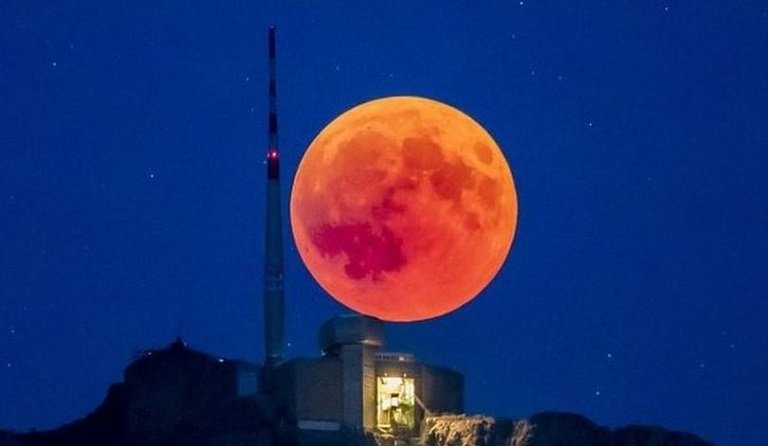Africa
#LunarEclipse: Abuja residents witness century’s longest eclipse

The longest “blood moon” eclipse this century began on Friday, coinciding with Mars’ closest approach in 15 years to treat skygazers across the globe to a thrilling celestial spectacle.
In Abuja, the Nigerian capital, the spectacle was witnessed at 8.18p.m.
Unlike with a solar eclipse, viewers do not need protective eye gear to observe the rare display.
“All you have to do is… go outside!” the Royal Astronomical Society (RAS) in London said, adding that binoculars would be useful to observe the phenomenon.
Are you watching the #LunarEclipse live in person or online? We are! It's visible to much of Earth’s population except North & Central America (& globally online). Totality is underway now through 5:13pm ET.
🌕🌖🌗🌘🌑🌒🌓🌔🌕
Watch live now: https://t.co/9F3QXrlF2n pic.twitter.com/4xMr306gF5
— NASA (@NASA) July 27, 2018
For about half the world, the moon will be partly or fully in Earth’s shadow from 1714 to 2328 GMT — six hours and 14 minutes in all.
READ: Nigeria Army begins production of weapons
The period of complete eclipse — known as “totality”, when the moon appears darkest — will last from 1930 to 2113 GMT.
At the same time, Mars will hover near the moon in the night sky, easily visible to the naked eye.
What’s a blood Moon? How does the science behind an #eclipse work? Right now, a #LunarEclipse is underway in the sky over much of Earth’s population except North & Central America. Get the answers to these & other questions about this celestial event: https://t.co/Uy2j0hfHRj pic.twitter.com/dEk1vN3goo
— NASA (@NASA) July 27, 2018
Amateur astronomers in the southern hemisphere will be best-placed to enjoy the spectacle, especially those in southern Africa, Australia, India and Madagascar, though it will also be partly visible in Europe and South America.
Beside Lake Magadi, 100 kilometres (60 miles) southwest of the Kenyan capital Nairobi, husband and wife team Susan Murabana and Chu Owen set up their high-powered telescope for the local community to watch the event.
The website www.timeanddate.com also offers the exact locations and timing of the eclipse as it moves from Friday into Saturday.
The planet will appear unusually large and bright, a mere 57.7 million kilometres (35.9 million miles) from Earth on its elliptical orbit around the sun.
“We have a rare and interesting conjunction of phenomena,” Pascal Descamps, an astronomer with the Paris Observatory, told AFP.
“We should have a coppery red tint on the moon with Mars the ‘Red Planet’ just next to it, very bright and with a slight orange hue itself.”
A total lunar eclipse happens when Earth takes position in a straight line between the moon and sun, blotting out the direct sunlight that normally makes our satellite glow whitish-yellow.
The moon travels to a similar position every month, but the tilt of its orbit means it normally passes above or below the Earth’s shadow — so most months we have a full moon without an eclipse.
When the three celestial bodies are perfectly lined up, however, the Earth’s atmosphere scatters blue light from the sun while refracting or bending red light onto the moon, usually giving it a rosy blush.
This is what gives the phenomenon the name “blood moon”, though Mark Bailey of the Armagh Observatory in Northern Ireland said the colour can vary greatly.
It depends partly on “how cloudy or transparent those parts of the Earth’s atmosphere are which enable sunlight to reach the moon”, he told AFP.









